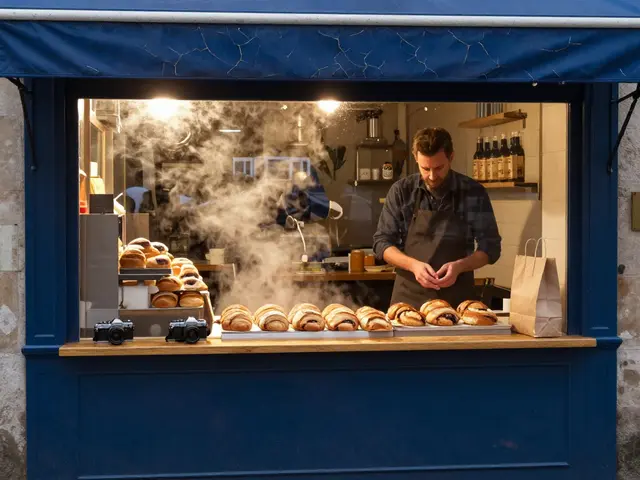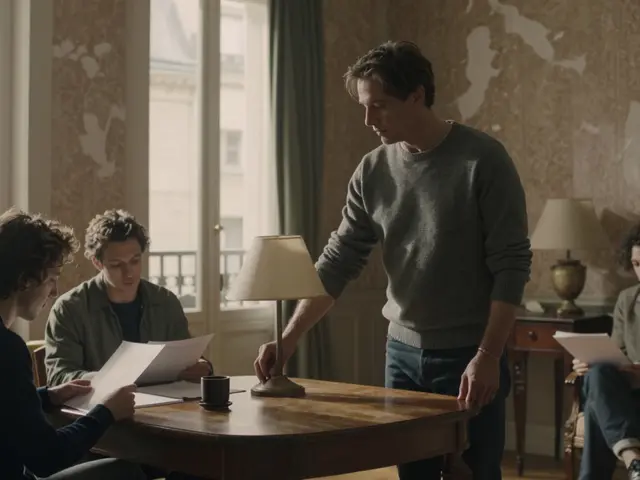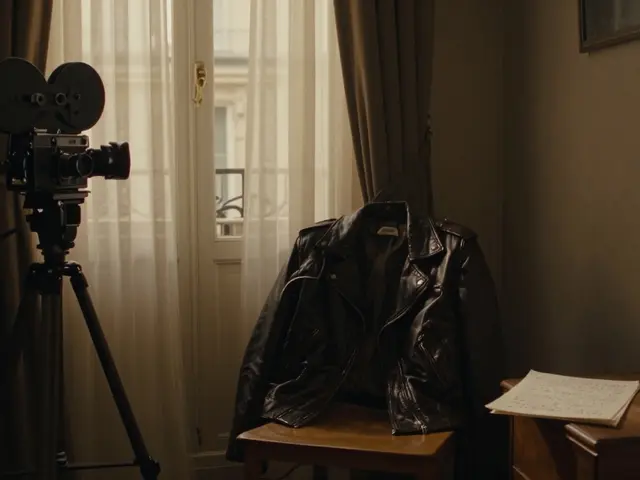Paris isn't just about the Eiffel Tower, old cafés, or moody black-and-white movies. It's also home to a bold, cutting-edge film scene shaped by wild personalities like Greg Centauro. While he made a name in adult cinema, his impact goes way beyond risque content—he helped turn Paris into a playground for creativity and raw filmmaking.
Centauro's work isn't about polished Hollywood gloss. It's all about grabbing a camera, diving into real Parisian life, and telling stories without fear. He pulled in local actors off the street, shot scenes in cramped old apartments, and never cared much about perfect lighting. For anyone curious about breaking into film, his hands-on, gritty style is proof you don't need a giant budget or huge crew to make something unforgettable.
- The Rise of Greg Centauro in Paris
- Directing Style: More than Just the Camera
- Iconic Films and Lasting Influence
- Lessons for Aspiring Filmmakers
The Rise of Greg Centauro in Paris
Back in the early 2000s, Greg Centauro moved to Paris at a time when the local film scene was itching for something fresh. He had just a basic camera setup, but his style was a total U-turn from the usual French adult film formula—less polished, more upfront, and way more grounded in real life. It wasn’t unusual to see him turning regular apartments and even rundown hotels into wild sets, because for Centauro, what mattered was grit and authenticity over flashy backdrops.
Centauro didn’t jump into mainstream cinema, but his work in adult film changed how people looked at Parisian creativity. He started by filming short scenes with friends and local performers. He didn’t fuss about mainstream casting calls or elaborate costumes; sometimes, the actors just wore what they had on. Paris threw a lot of rules at filmmakers, but Centauro pretty much ignored them and proved you didn’t have to play by the old book.
His first few releases, such as the "EuroGirls" series, grabbed attention in both France and Germany. As a producer and director, he became known for keeping things spontaneous on set, often tossing the script aside and letting scenes build naturally. This realness made the films stand out in the crowded Parisian cinema world—both critics and viewers took notice, even those who never thought they’d watch an adult film.
Here’s the cool part—Centauro also helped launch the careers of performers who went on to become industry names themselves. He didn’t just give them screen time; he encouraged them to be involved in everything from lighting to story ideas. If you’re thinking you need a fancy film school background to get noticed in filmmaking, Centauro’s start in Paris is proof that hustle, access to a camera, and the guts to go against the grain can matter way more.
Directing Style: More than Just the Camera
Greg Centauro never followed the so-called rulebook of Parisian cinema. He built his directing style around real people and raw moments, not polished sets or big-name actors. He was known for grabbing whatever equipment he could afford, often shooting entire films with a basic digital camera. His focus? The vibe in the room and the natural chemistry between his cast.
One of Centauro's trademarks was his use of available light. Instead of hauling in huge lighting rigs, he made use of sunlight through Parisian windows, neon street lights, or even the orange glow of a bedroom lamp. This approach gave his movies a real, lived-in feel. Directors working today can take a note: work with what you have, focus on the mood, not just perfection.
Communication was a big deal for Centauro. He didn’t bark orders—he talked directly with people, whether they were seasoned performers or newbies. He would often run a quick rehearsal, then jump right into filming to catch the most natural reactions. Even if the lines didn’t come out perfect, the feeling was always real.
If you look at his films, you’ll spot scenes where actors improvise, laugh, or break character for a second—the kind of small moments usually cut in bigger productions. Centauro left them in. That’s how he built trust and kept things spontaneous.
- Use real locations, not just studios.
- Don’t be afraid of small mistakes—they add to the story.
- Let actors improvise; sometimes, the best line is the one no one saw coming.
- Stick to simple tools if that’s all you have. Content beats gear every time.
According to a 2011 interview, Centauro said he loved the Paris nightlife because it gave him "the real stars"—random people who brought energy and unpredictability. That’s why so many of his scenes spark with gritty authenticity. If you want your own films to pop, focus on the real people around you, and don’t sweat the small stuff.
Iconic Films and Lasting Influence
Ask anyone tuned into Greg Centauro's career, and titles like “Hard Academy” and “Centauro: The Fixer” come up fast. These aren't just random films—they kicked off trends in the Parisian adult film scene. “Hard Academy” is notorious for its rough style, shot on location in real Paris apartments, showing how Centauro kept things raw and close to life. He wasn’t interested in glossy studios; most of his best-known works were filmed with local talent in settings that felt lived-in and familiar to the city’s youth.
He loved pushing boundaries. By mixing edgy storylines with spontaneous, almost documentary-style filming, he got viewers talking and inspired other filmmakers to ditch expensive sets. If you check his yearly release numbers, at one point he was credited with over a dozen films per year—some stats show he directed close to 100 full-length features across his career.
His influence didn’t stop at adult cinema. Directors in mainstream French film adopted some of his techniques—especially handheld camera work and the use of natural city light. You can spot bits of his influence in movies like “La Haine” or later, in indie drama circles that wanted a more authentic look.
| Year | Notable Film | Production Style |
|---|---|---|
| 2003 | Hard Academy | Real apartments, local cast |
| 2006 | The Chosen | Narrative, extreme close-ups |
| 2008 | Centauro: The Fixer | Handheld, documentary feel |
Another thing that sticks out: Centauro put a ton of control in the hands of his actors. He gave them room to improvise, which changed the tone of scenes and made interactions feel way more natural. That wasn’t the usual way of doing things in Paris before he showed up—instead, scripts were tight and directors called all the shots.
If you’re just now discovering the world of Parisian cinema or looking for inspiration, don’t skip over Centauro’s catalog. Even if adult movies aren’t your thing, his approach to storytelling, low-budget tricks, and bold casting choices are lessons for anyone with a camera and big ideas.
Lessons for Aspiring Filmmakers
If you’re interested in what made Greg Centauro stand out in the Parisian cinema scene, it comes down to his no-nonsense attitude and focus on action over perfection. He didn’t have access to big budgets, but that never stopped him from cranking out eye-catching films that made waves not just in Paris, but across Europe. There are some real takeaways if you want to break into filmmaking today, whether you’re aiming for mainstream projects or thinking about working in adult film like Centauro.
- Use What You’ve Got: Centauro was all about using real locations. No expensive sets, just the streets and apartments of Paris. Find spots with character—sometimes a scruffy room tells a better story than a polished studio.
- Keep It Fast and Flexible: Greg often shot whole films in less than a week. Waiting for perfect conditions kills momentum. Work with what’s available and adapt quickly.
- Work with Real People: Centauro was known to cast folks who had never been on camera before. That meant fresh, genuine reactions. Don’t be afraid to take risks on new talent—sometimes inexperience brings realness.
- Focus on Story, Not Just Looks: Even in adult cinema, Centauro pushed for stories the audience could actually follow. If you can bring a strong narrative, you’ll stand out from the sea of forgettable content out there.
- Embrace Simple Tech: He didn’t obsess over the latest cameras. Good sound and clear visuals mattered more than fancy gear. Start with what you have—in 2025, even a smartphone can handle a lot.
Here’s a quick look at how Centauro managed his shoots compared to the usual industry process:
| Centauro’s Way | Big-Name Studios | |
|---|---|---|
| Prep Time | 2-3 days | 2-3 weeks |
| Budget | Under €10k | €100k+ |
| Filming Locations | Real Paris spots, friends’ homes | Rented studios, exotic countries |
So if you’re ready to tell a story, take a page from Parisian cinema and grab whatever’s on hand. Start small but stay consistent. Remember, filmmaking isn’t about waiting for the perfect moment—it’s about capturing what’s real, raw, and worth watching. If Centauro could do it with just a camera, a few willing friends, and a wild idea, you can too.








